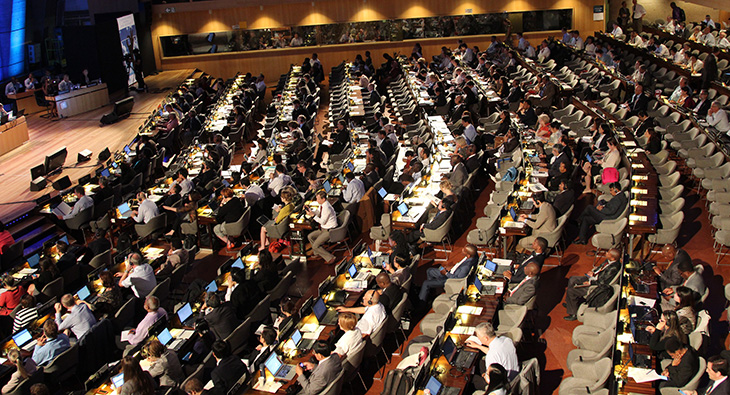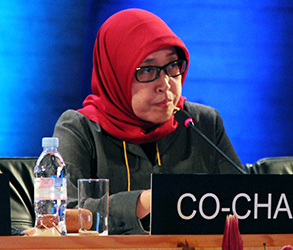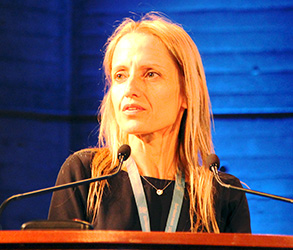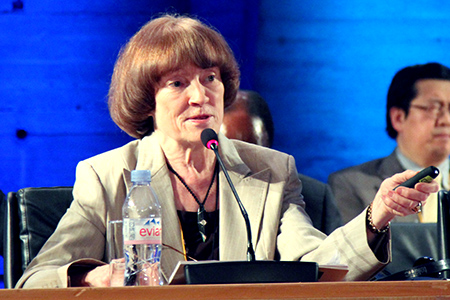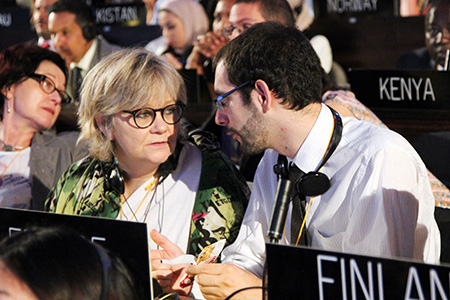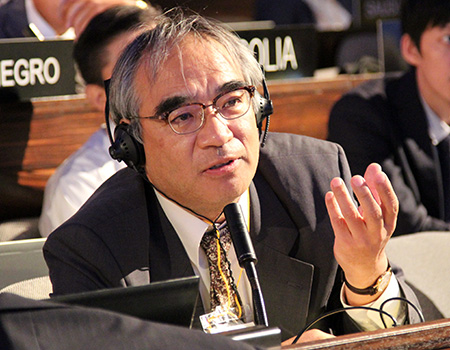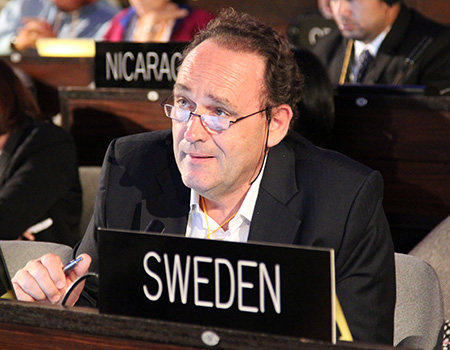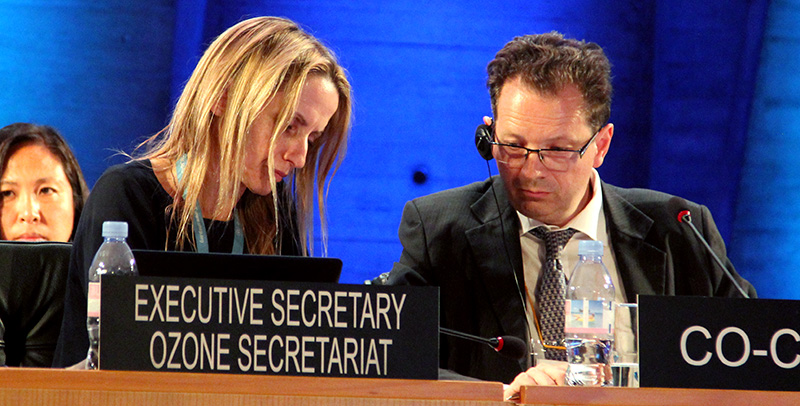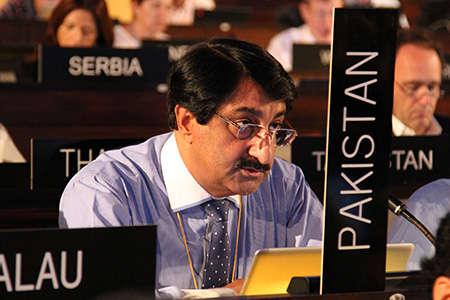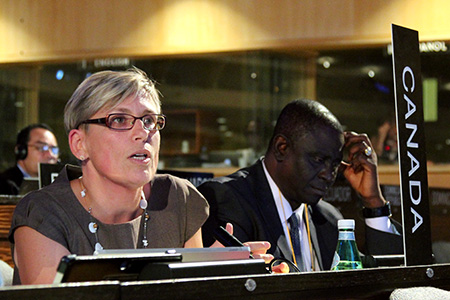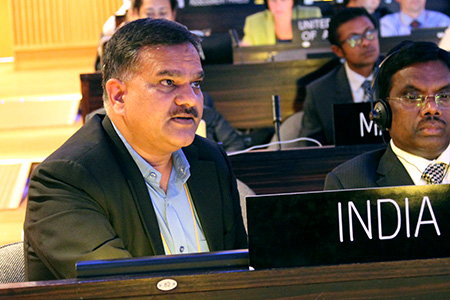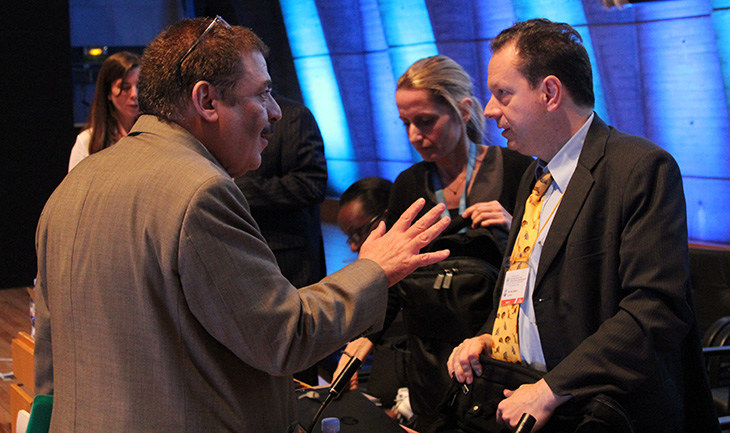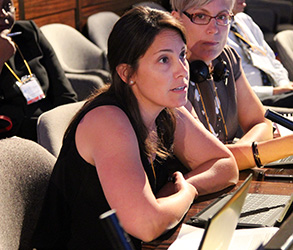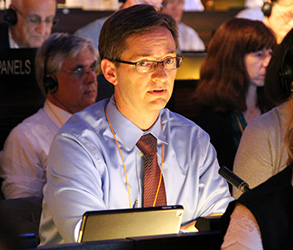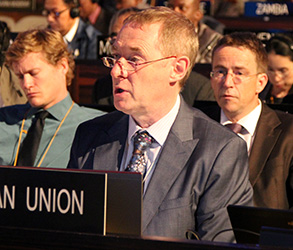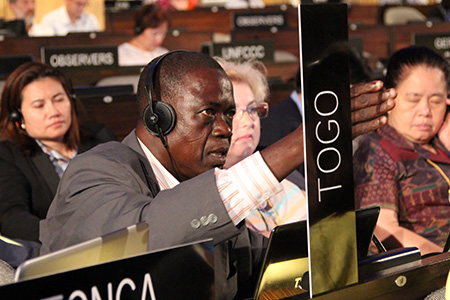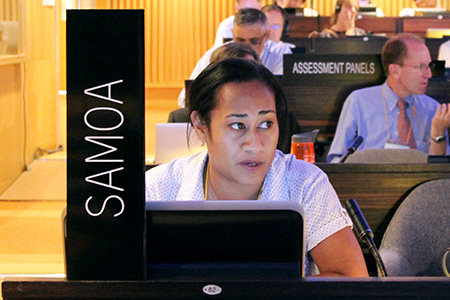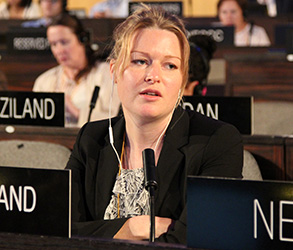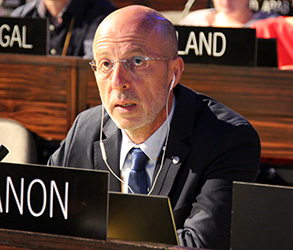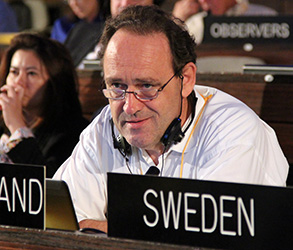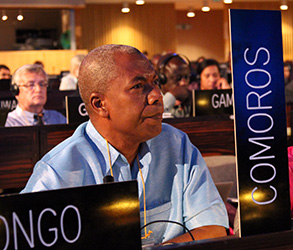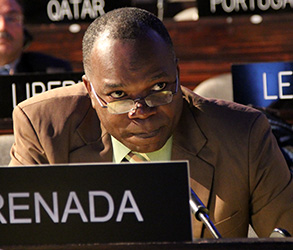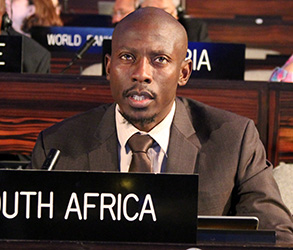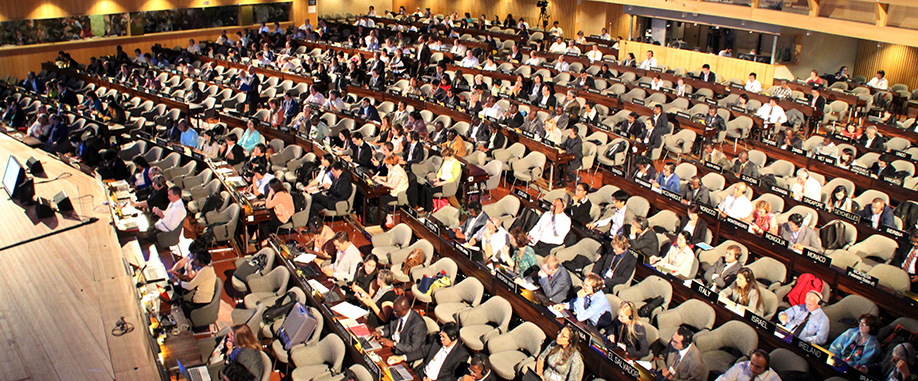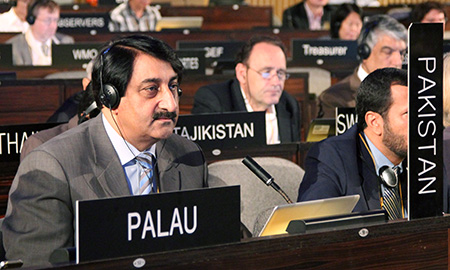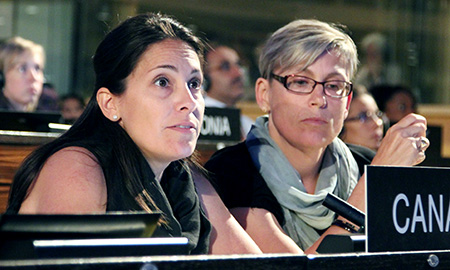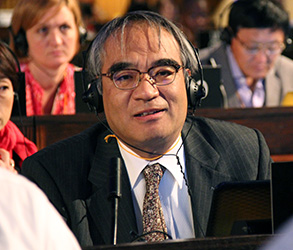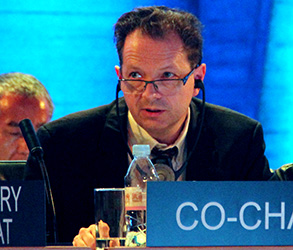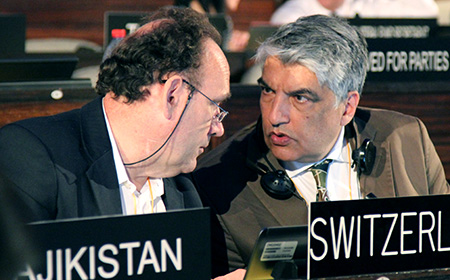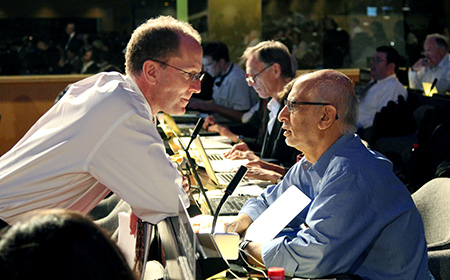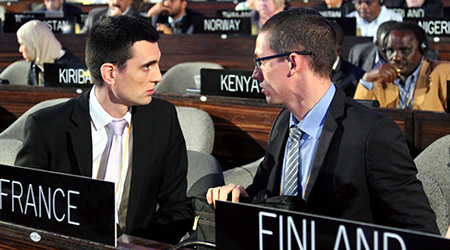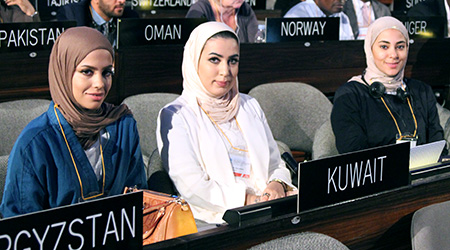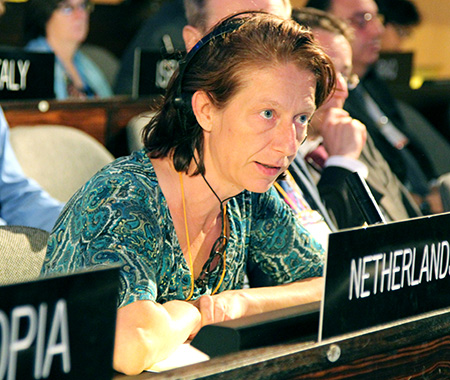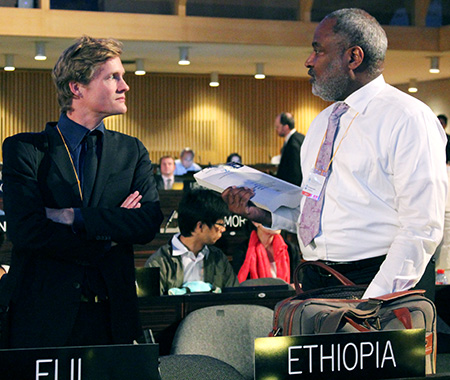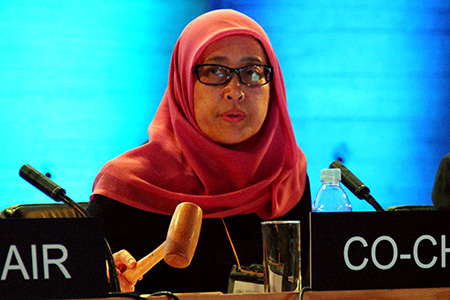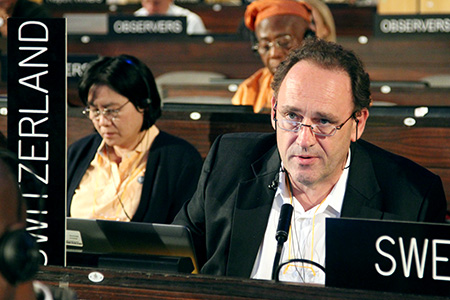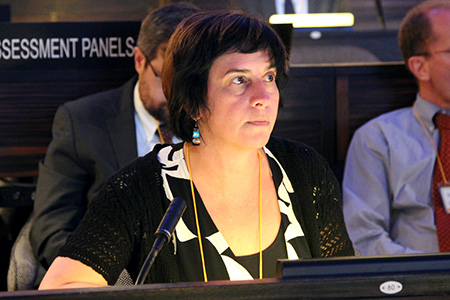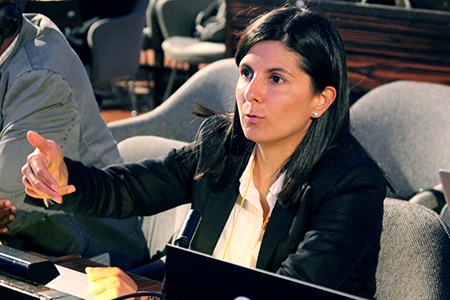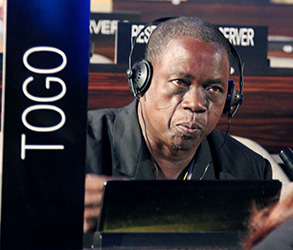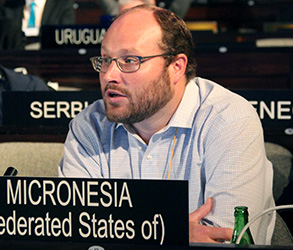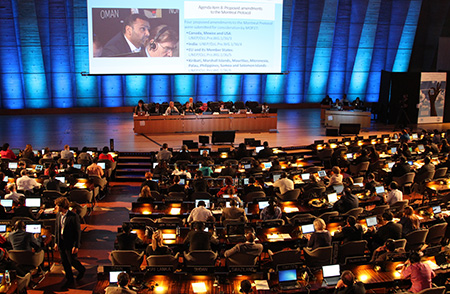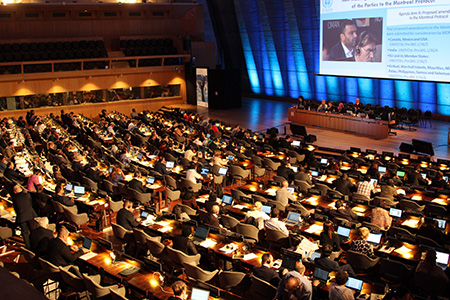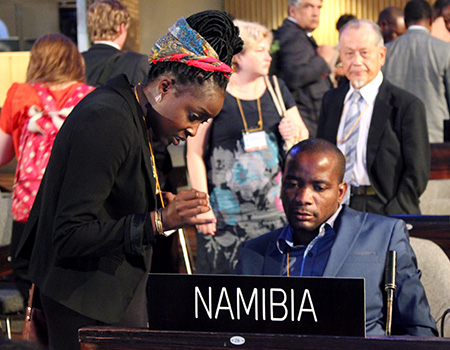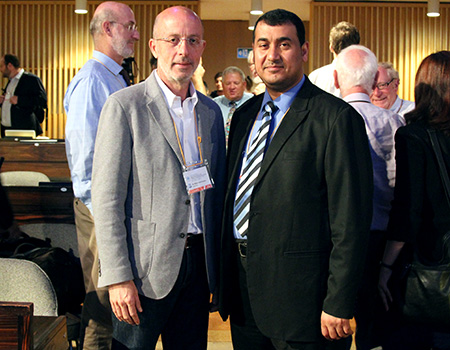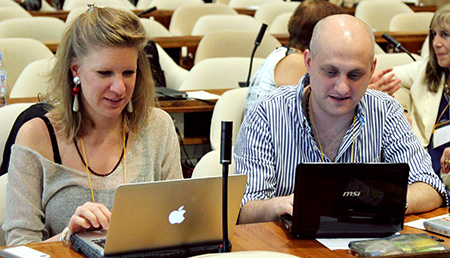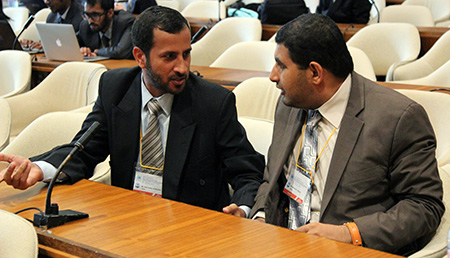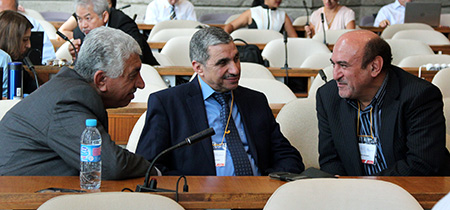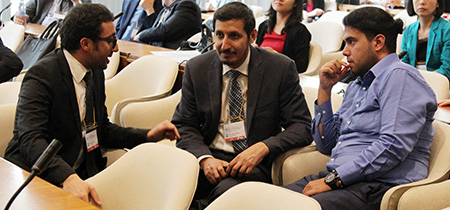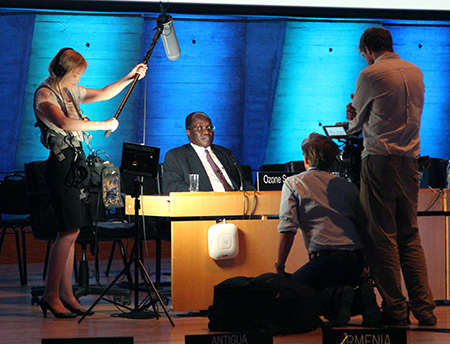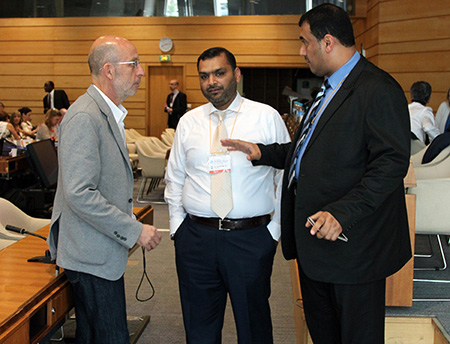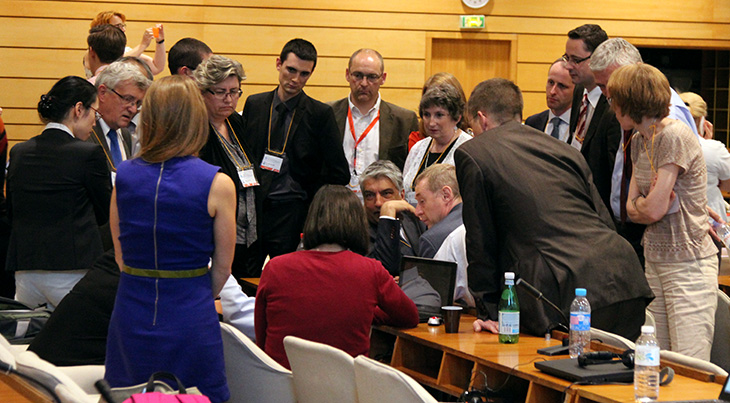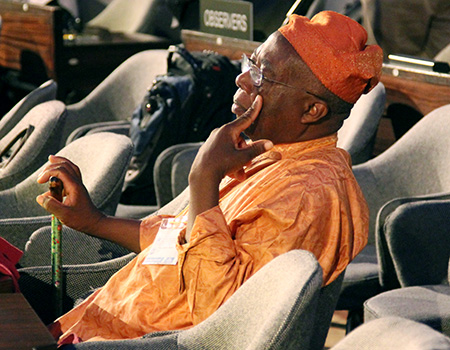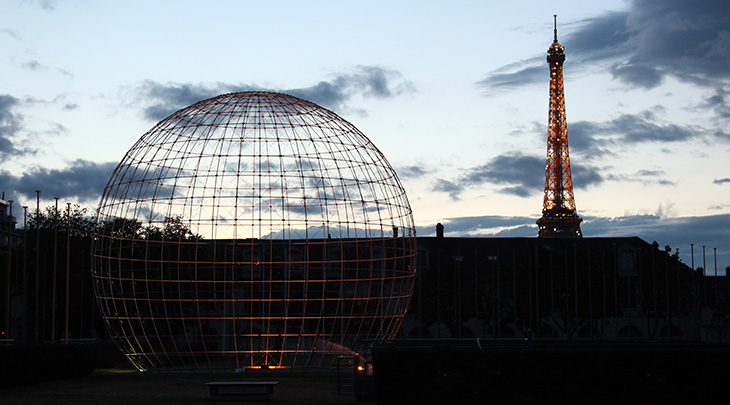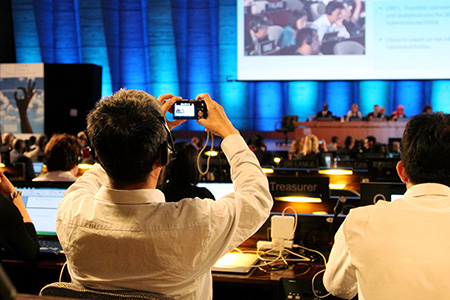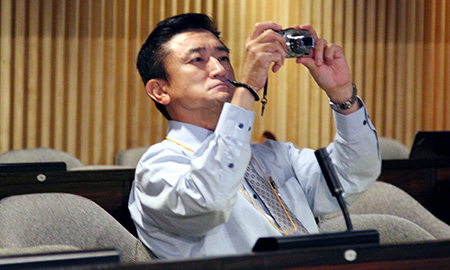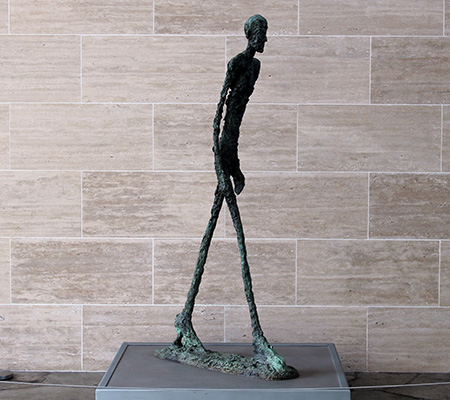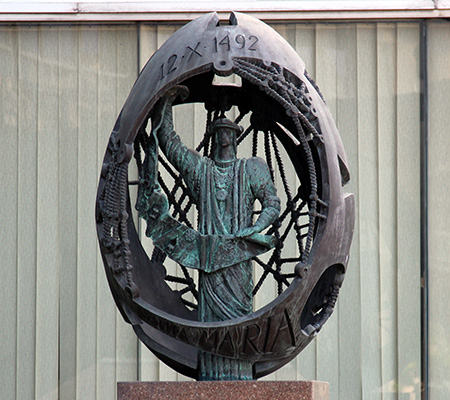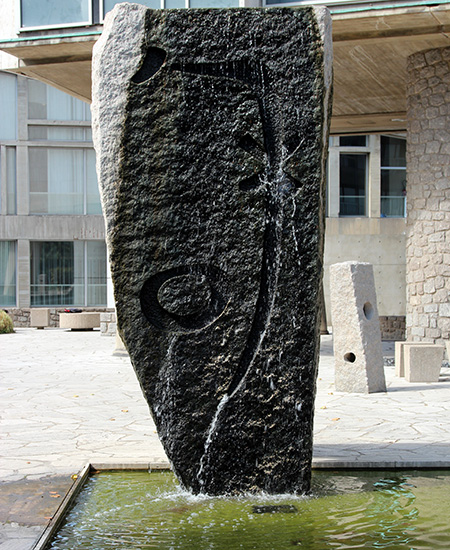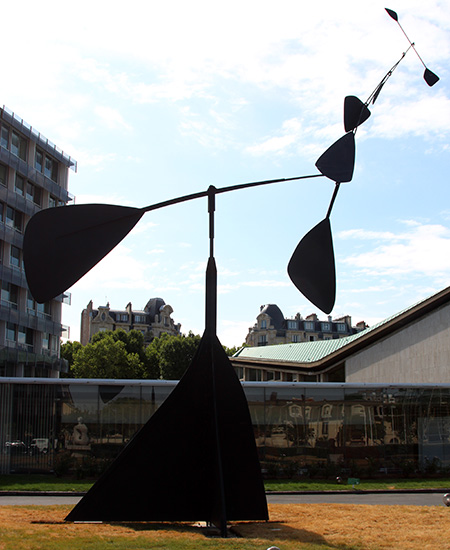36th Meeting of the Open-Ended Working Group of the Parties to the Montreal Protocol
20-24 July 2015 | United Nations Organization for Education, Science and Culture (UNESCO) headquarters, Paris, France
Summary Highlights of the Meeting
Download ENB Meeting Report |
||||||||
|
||||||||

| Follow @IISDRS | ||

Loading... |
||
|
Receive emailed updates with the news articles above plus related information and announcements from our CLIMATE-L community mailing list: |
||
|
|||
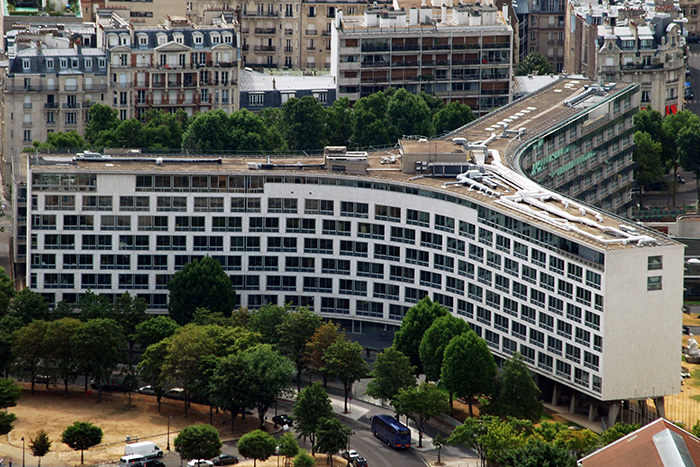
The UNESCO headquarters as seen from the Eiffel Tower (photo by Nicole Schabus) |
||
|
The thirty-sixth meeting of the Open-Ended Working Group (OEWG 36) of the Parties to the Montreal Protocol on Substances that Deplete the Ozone Layer opened on Monday, 20 July 2015, in Paris, France. In the morning, OEWG 36 met in plenary to adopt the provisional agenda with a minor editorial amendment and address the organization of work. Delegates then heard the 2014 quadrennial assessment reports of the Scientific Assessment Panel (SAP), the Environmental Effects Assessment Panel (EEAP) and the Technology and Economic Assessment Panel (TEAP). Delegates then turned to the agenda item on the 2015 progress report of the TEAP, which included progress reports from the Chemicals Technical Options Committee (TOC), Foams TOC, Halons TOC, and Methyl Bromide TOC. They also addressed issues related to exemptions under Article 2A–2I of the Montreal Protocol, which included discussions on nominations for essential-use exemptions for 2016 and nominations for critical-use exemptions for 2016 and 2017, and the TEAP report on alternatives to ozone-depleting substances (ODS). |
||
|
IISD Reporting Services, through its ENB Meeting Coverage, provided daily web coverage and a summary and analysis report from the 36th Meeting of the Open-Ended Working Group of the Parties to the Montreal Protocol, which took place from 20 to 24 July 2015, from the United Nations Organization for Education, Science and Culture (UNESCO) headquarters in Paris, France. Our summary and analysis report is available in HTML and PDF. Available in ENB Mobile at: http://enb.iisd.mobi/ozone-oewg36/ |
||
|
|
|
|
|
|
|
|
|
|
|
|
|||
|
The thirty-sixth meeting of the Open-Ended Working Group (OEWG 36) of the Parties to the Montreal Protocol on Substances that Deplete the Ozone Layer reconvened on Tuesday, 21 July 2015, in Paris, France. Plenary reconvened at 4:30 pm and after an update from Rafael Da Soler (Brazil), co-convener of the informal talks, Co-Chair Rachmawaty asked the informal talks to continue on Wednesday. Co-Chair Krajnik then opened discussions on the four proposals for a Montreal Protocol amendment regarding HFCs, with Canada presenting the North American proposal, the Federated States of Micronesia (FSM) the island states’ proposal, and India and the EU their respective proposals. Delegates then started general discussion of the proposals, including posing questions to proponents, which will resume on Wednesday morning. |
||
|
|
|
|
|
|
|
|
|
|||
|
The thirty-sixth meeting of the Open-Ended Working Group (OEWG 36) of the Parties to the Montreal Protocol on Substances that Deplete the Ozone Layer reconvened on Wednesday, 22 July 2015, in Paris, France. The informal talks on the feasibility and ways of managing HFCs resumed briefly after lunch and then broke so delegations could work on compromise proposals. The informal group reconvened in the evening after the close of plenary. |
||
|
|
|
|
|
|
|
|
|
|||
|
The thirty-sixth meeting of the Open-Ended Working Group (OEWG 36) of the Parties to the Montreal Protocol on Substances that Deplete the Ozone Layer reconvened on Thursday, 23 July 2015, in Paris, France. In the morning, OEWG 36 plenary addressed draft decisions, including on: potential areas of focus for the 2018 quadrennial reports of the Scientific Assessment Panel (SAP), the Environmental Effects Assessment Panel (EEAP) and the Technology and Economic Assessment Panel (TEAP); essential-use exemption for laboratory and analytical uses for 2016 in China; and issues related to the phase-out of HCFCs. |
||
|
|
|
|
|
|
|
|
|
|
|
|
|
|||
|
The thirty-sixth meeting of the Open-Ended Working Group (OEWG 36) of the Parties to the Montreal Protocol on Substances that Deplete the Ozone Layer reconvened on Friday, 24 July 2015, in Paris, France. In the morning, OEWG 36 plenary addressed draft decisions, including on: potential areas of focus for the 2018 quadrennial reports of the Scientific Assessment Panel (SAP), the Environmental Effects Assessment Panel (EEAP) and the Technology and Economic Assessment Panel (TEAP); and essential-use exemption for laboratory and analytical uses for 2016 in China. Plenary also resumed its discussions on aspects of the four amendment proposals. The informal discussions on the feasibility and ways of managing HFCs reconvened in the morning prior to plenary. They then broke for the morning plenary session. The informal group reconvened at lunch to continue its discussions. 5.50pm update: Plenary postponed until 7.pm. Informal discussions continue. 10.08pm update: Informals continue. 10.38pm update: Plenary resumed. 11.47pm: OEWG36 is suspended. The session will reconvene prior to MOP27, which is to be held in November 2015. |
||
|
|
|
|
|
|
|
|
|
|
|
|
|
|
|
|
|
|
|
|
|
Around the venue
|
|
|
|
|
|
|
|
|
IISD Reporting Services is grateful to the many donors of the Earth Negotiations Bulletin (ENB) and recognizes the following as core contributors to the ENB: the European Union, the Finnish Ministry for Foreign Affairs, the German Federal Ministry for the Environment, Nature Conservation, Building and Nuclear Safety (BMUB), the International Development Research Centre (IDRC), the Japanese Ministry of Environment (through the Institute for Global Environmental Strategies - IGES), the New Zealand Ministry of Foreign Affairs and Trade, the Kingdom of Saudi Arabia, SWAN International, Government of Switzerland (the Swiss Federal Office for the Environment (FOEN), the Swiss Agency for Development Cooperation (SDC), and the United Nations Environment Programme (UNEP). Funding for translation of the Bulletin into French is provided by the Government of France, the Wallonia, Québec, and the International Organization of La Francophonie/Institute for Sustainable Development of La Francophonie (IOF/IFDD). |
||




